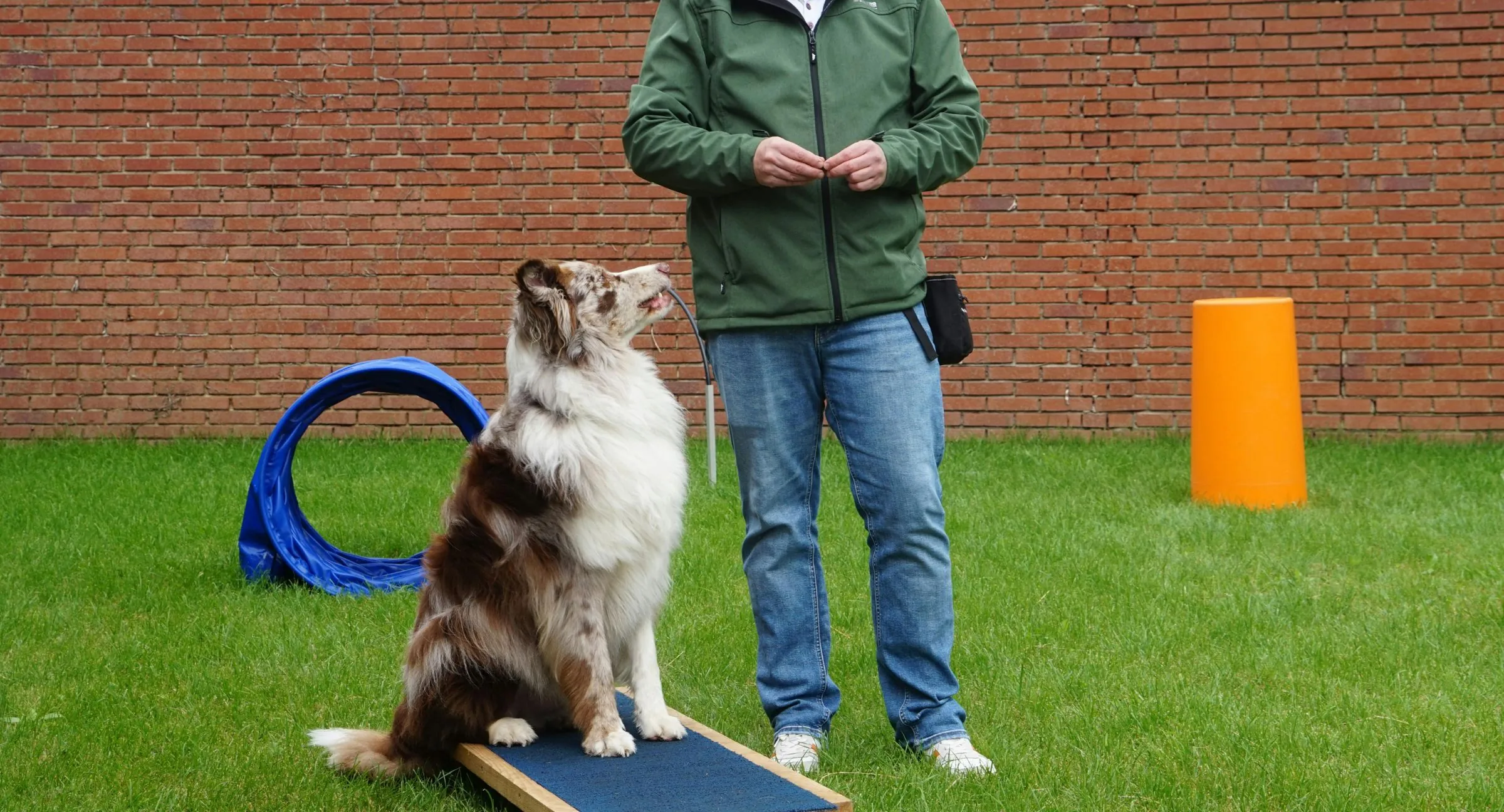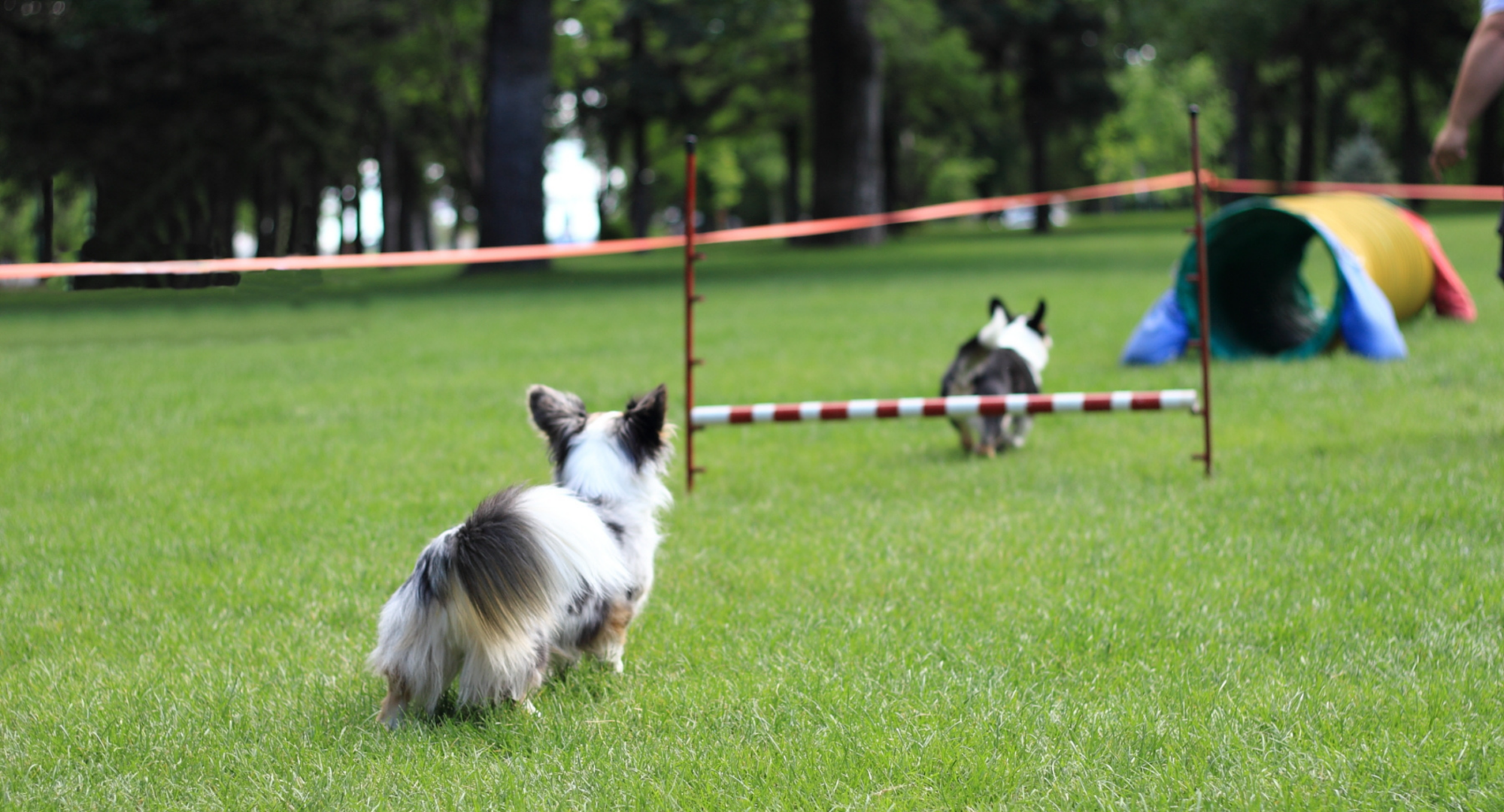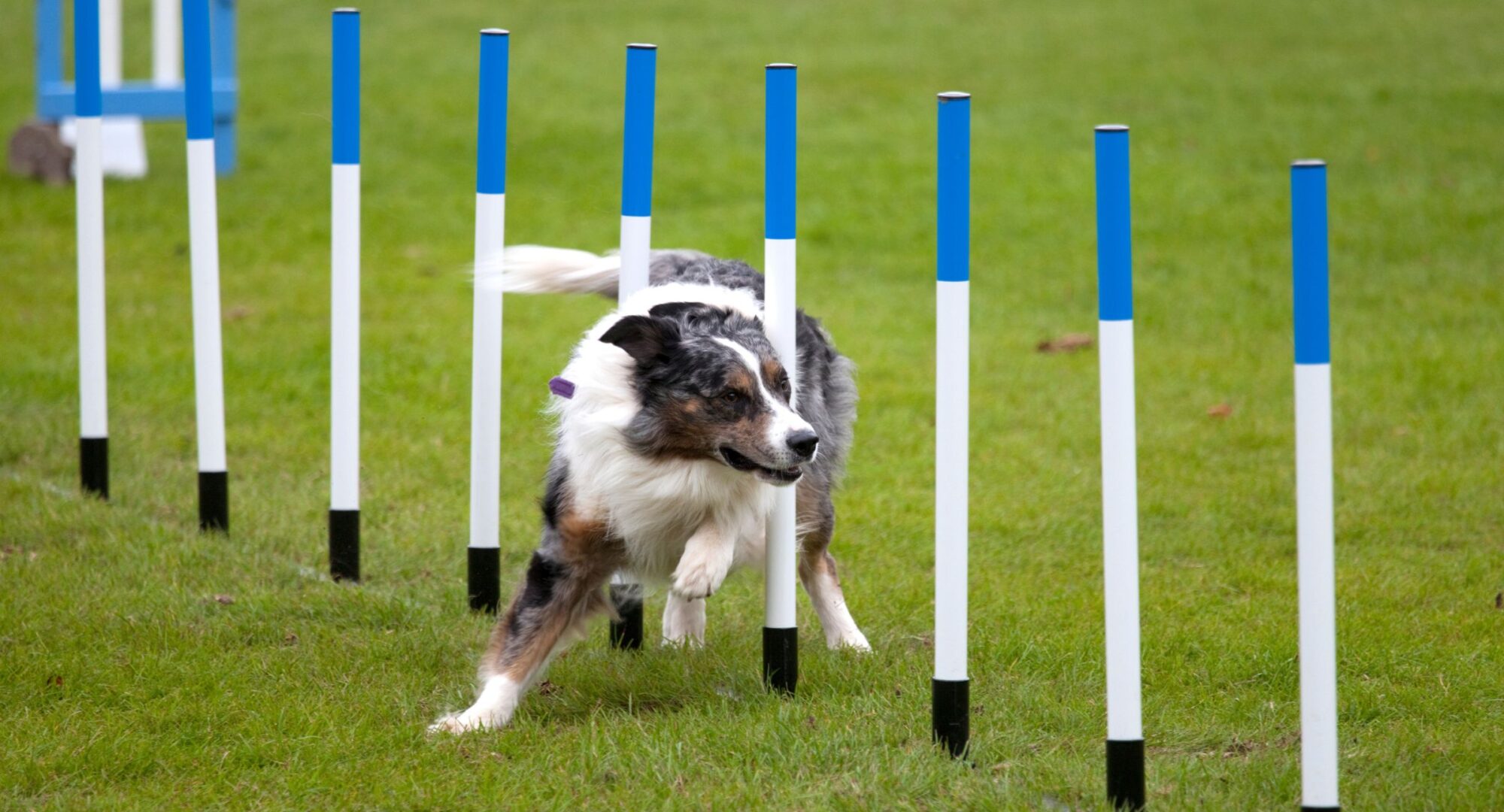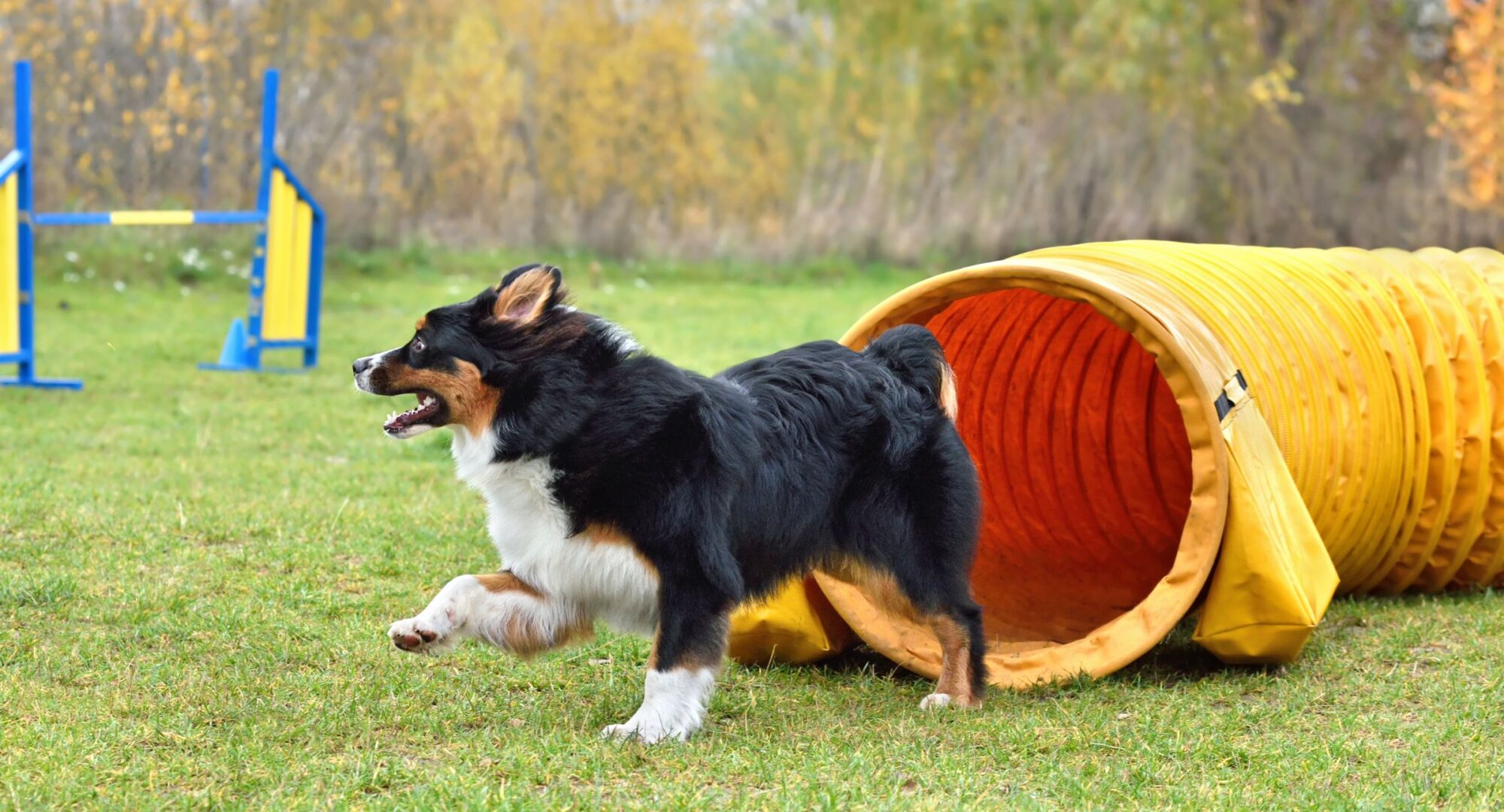Agility Equipment for Dogs: Beginner’s Guide to Training
Agility training for dogs is a fast-growing sport in the U.S., loved for its exciting mix of skill, speed, and teamwork. Trials feature 14–20 obstacles, such as tunnels, weave poles, tire jumps, seesaws, and pause tables that challenge both dogs and their handlers.
To build these skills, daily practice at home is essential. Experts recommend 15–20 minutes a day to reinforce techniques learned in structured classes. It is important to use the right equipment to ensure training is safe and effective. This guide covers everything you need to start agility training at home.

Planning a Home Dog Agility Setup
Setting up a dog agility space at home needs smart planning that balances safety with available space. The right environment can make a huge difference in your training success, whether you’re new to the sport or helping your dog advance their skills.
Choosing a safe training area indoors or outdoors
A safe area forms the foundation of effective home agility training. Your dog’s safety should be your top priority when creating an at-home agility course. Indoor setups might need you to clear your living room of furniture or keep your hallway free of obstacles. Training indoors gives you climate control benefits.
Your backyard can also work great for outdoor setups if it’s level and has firm, stable footing. Many agility enthusiasts transform parts of their yards into “all-season” training spots.
Here are some surface options to think over:
- Grass: Gives good grip but might get slippery after rain
- Packed dirt: Stays consistent in most weather
- Mulch: Playground-grade mulch (without sharp pieces) works well year-round.

Space requirements for simple agility obstacles
Limited space creates one of the biggest hurdles for home agility setups. A complete course with all standard obstacles needs about approximately 5,000 square feet of space. The right spacing between obstacles keeps your dog safe. Obstacles placed too close together won’t let dogs take off properly and might cause crashes.
If your space is limited, you can practice single-jump exercises and core skills effectively even in a 10 x 10 foot area. Dog owners often set up only a few obstacles at a time instead of overcrowding the space.
Essential Agility Equipment for Beginners
Starting your dog agility experience needs the right equipment. Agility equipment for dogs should be equipment that works well, keeps your dog safe, and fits your budget. Here are two simple obstacles for a beginner’s agility course you can set up at home.
Starter jumps with adjustable height settings
Jumps are central to agility training and you’ll see them most often in competitions and practice sessions. Adjustable bar jumps give you the most options as a beginner. You can make things harder as your dog builds confidence and skill.
Quality starter jumps should have:
- Adjustable heights: Pick jumps that offer multiple height settings from 4 to 24 inches. This works for dogs of all sizes and skill levels
- Lightweight construction: Furniture-grade PVC is tough yet easy to move around when you change your course layout
- Displacement safety: Jump bars need to fall away if your dog hits them. This helps prevent injuries
- Weather resistance: UV-stabilized PVC lets you leave jumps outside all year without damage
New trainers should start with four jumps. This gives enough variety to learn basic sequences and develop skills.

PVC weave poles for backyard use
Weave poles are the toughest basic obstacle to learn. This makes home practice really valuable. Fixed-base PVC pole sets give beginners the right mix of durability and training flexibility.
Look for these features in starter weave pole sets:
- Standard spacing: Keep poles 24 inches apart to match what dogs see in competition
- Sturdy construction: Good sets use 3/4″ or 1″ Schedule 40 PVC that stays stable
- Visual markers: Bright vinyl tape or wraps help dogs see the poles better during training
- Ground stability: Garden stakes or similar anchors keep poles from moving
Six poles work well for beginners. You can add more poles later as skills improve.

DIY vs. Commercial Agility Products for Dogs
Dog owners often choose between the satisfaction of DIY agility projects and the convenience of buying commercial equipment. This choice usually depends on budget and time investment, and each approach has its unique benefits. You can save money and customize obstacles to fit your dog’s specific needs by creating homemade agility equipment.
Safe Equipment Use at Home
Dog agility equipment at home needs proper setup and upkeep to be safe. Quality obstacles can still be dangerous if you don’t set them up right or take care of them. You and your dog will stay injury-free when you follow the right safety steps during your training.
Anchoring tunnels and jumps to prevent tipping
Agility tunnels must stay firmly in place to avoid movement or collapse during practice. Tunnel bags, sandbags and metal stakes with mitered ends can add extra security outdoors.

Non-slip surfaces for contact obstacles
Your elevated equipment should have non-slip surfaces to keep paws secure going up or down. Here are some good options:
- Rubber coating kits with granules over adhesive bases
- Ultra-fine substrate mixed with latex paint that gives great foot grip
- EVA foam mats that cushion joints and provide traction
Safety depends on checking your equipment daily. Monitor the stability of your bases and anchors and ensure surface conditions are free from splinters, cracks or grip issues.
Limitations of Home Training
Home agility courses offer convenience, but training without professional supervision has significant limitations. A professional training environment provides key advantages that home practice often lacks—impacting both the effectiveness and safety of training.
Lack of live feedback from trainers
Professional trainers can correct mistakes quickly, something that’s hard to do at home. During home training, handlers may send mixed signals, confusing the dog and slowing them down. Trainers also catch small errors that beginners often miss.

Don’t forget to give your dog some treats! Rewarding your dog with Ultimates Soft Treats for Dogs after good behavior reinforces learning and keeps them motivated on the course.
Key Takeaways
- Dog agility training is a rewarding sport that builds a deeper bond with your pup
- A proper training environment with the right equipment makes the foundation of successful agility training
- Safety must drive all decisions when you set up a home practice area
- Handlers need patience and consistency above all else
- The best results come from mixing structured classes with home practice rather than picking just one approach
Check out The Ultimate Guide to Dog Agility Training to learn the benefits of agility training and the suitability of different dog breeds!

